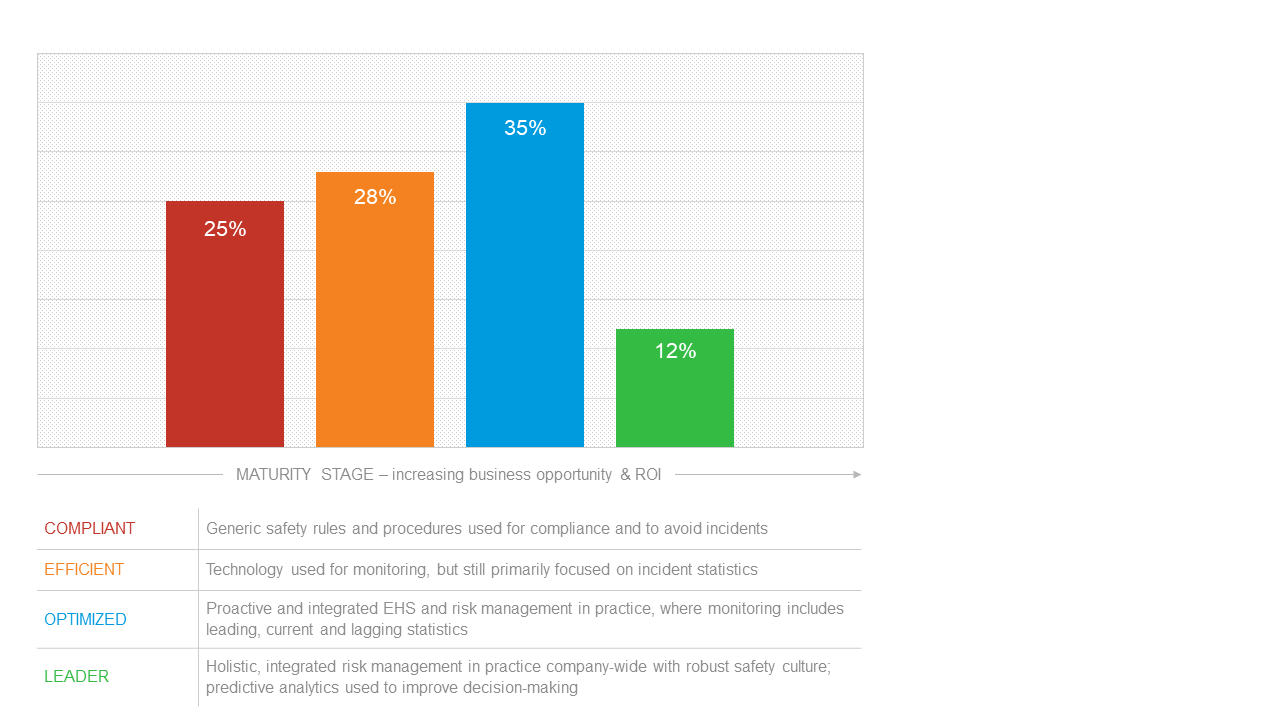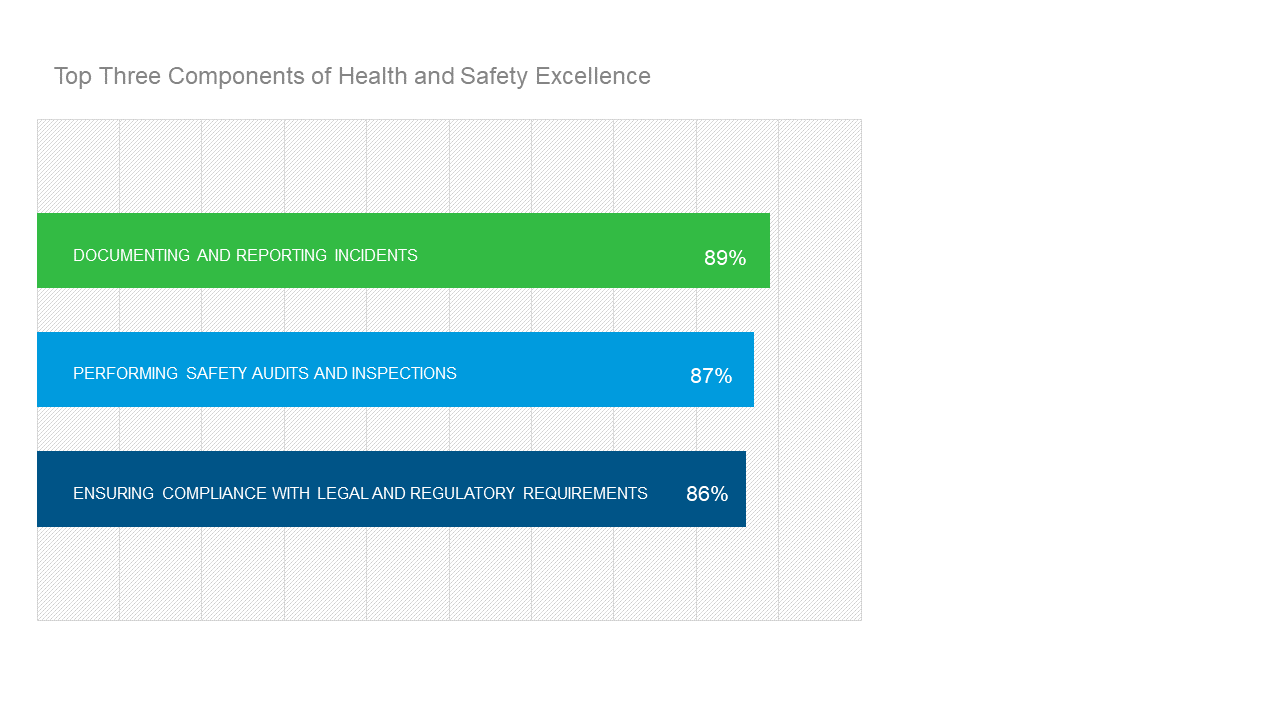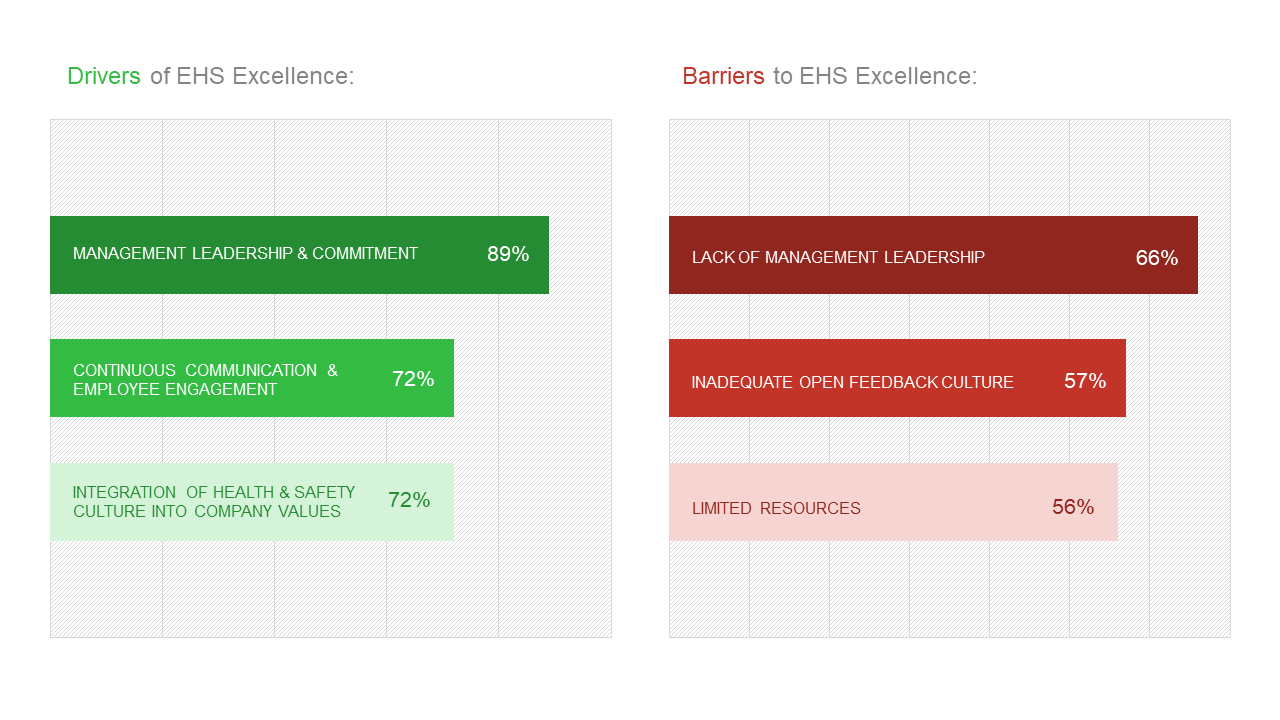A recent survey by the U.S. Bureau of Labor Statistics reported a concerning 7.5% increase in injuries and illnesses in 2022 among industries where environment, health and safety risks are high. This alarming trend not only led to an increase in lost workdays, but also reduced production rates and increased costs for companies operating in these industries.
To gain a deeper understanding of the current state of health and safety programs within organizations, Sphera launched its global Health and Safety Pulse Survey in late 2023. The survey aimed to assess the maturity of health and safety initiatives and explore the impact of the COVID-19 pandemic on organizations’ approaches to employee health, safety and well-being.
Maturity levels: Where do companies stand?
The survey delved into how companies perceive their health and safety maturity levels, categorizing them as compliant, efficient, optimized or a leader. Only 12% of companies view themselves as a leader in health and safety management, with 35% claiming to be in the optimized stage. Over 50% of respondents find themselves still in the initial stages of their journey (25% compliant, 28% efficient).

Success factors of health and safety programs
The cornerstones of EHS excellence are clear: meticulous documentation, thorough audits and unwavering regulatory compliance. Our survey reveals that 89% of companies prioritize incident reporting, leaving no stone unturned in the pursuit of safety. While 87% perform regular safety audits and inspections, mature organizations record near-misses and observations to proactively prevent incidents (a close second at 85%). This proactive approach to incident management demonstrates a commitment to staying ahead of the curve by anticipating potential hazards before they become reality. It’s a testament to the understanding that safety isn’t just about ticking boxes, but about fostering a culture of continuous improvement and shared responsibility.

Demystifying the drivers and barriers for EHS excellence
The survey results underscore a significant reality: 89% of high-performing EHS programs thrive on dedicated leadership commitment. Leadership facilitates continuous communication, employee engagement, and, critically, the integration of safety into your company’s day-to-day activities. While all EHS programs rely on leadership, mature companies prioritize cultural integration, turning safety into a core value, not just a checklist.
The importance of committed leadership is also demonstrated by our findings on the barriers to strong health and safety performance, where respondents unanimously identified a lack of leadership engagement as the biggest barrier. Less mature organizations also struggle with a closed feedback culture, which hinders crucial insights. For mature organizations, resource constraints and competing priorities emerge as the second biggest hurdle.

Mature programs that capture near misses and observations unlock a wealth of insights, but only if teams have the tools and resources to handle the additional data. Without technology, this may seem like an increased workload that puts more pressure on your teams. An investment in EHS software to overcome these resource constraints can improve automation, simplify data analysis and turn information overload into actionable improvements. Read this impressive case study on how Co-op, a U.K.-based retail company, used their large amount of historical data to proactively improve workplace safety.
Adapting to change
During and after the COVID-19 pandemic, health, safety and well-being received more attention than in previous years. According to the survey, health and safety team responsibilities have increased (according to 63% of respondents), particularly in less mature companies. Mental health and well-being (reported by 60%) and environmental, social and governance (ESG) considerations (reported by 54%) have gained prominence. While ESG is seen as an additional burden for health and safety teams (according to 37%), more mature companies recognize its positive impact in driving focus on health and safety issues.
Clarifying the relationship between ESG and health and safety will be critical for companies in the coming months. EHS and health and safety leaders welcome the increased focus but emphasize the need for clear understanding and collaboration to meet ESG health and safety requirements.
As the health and safety landscape continues to evolve, organizations must adapt by leveraging technology and fostering a culture of continuous improvement to ensure the safety and well-being of their employees and the success of their business.
For more insight into how to overcome these challenges, watch our webinar where two survey participants and Sphera customers share their personal experiences, highlighting the hurdles they encountered and the innovative strategies they used to overcome them.

Navigating EHS Excellence: Insights from Industry Experts
Listen to our webinar focused on EHS and health and safety management. We share brand-new survey results on where companies are on their health and safety maturity journey. Get a clear picture of health and safety trends, where companies are focusing their efforts, and the barriers they face.
Our team of EHS experts can be your trusted partner at every stage. Contact us today to learn more about how we can help you transform your health and safety program and build a foundation for sustainable success.

